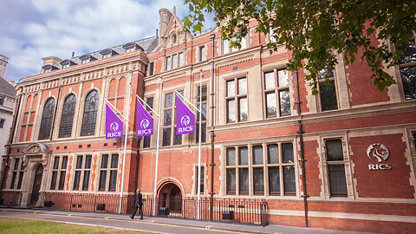With the growing long-term importance of sustainable construction, Building Information Modelling (BIM) is elevating building energy efficiency through advanced techniques like building energy modelling (BEM). It stands out as a transformative force in revolutionising the way buildings are designed, constructed and managed, reshaping the industry’s practices and setting new standards of success.
BIM’s digital transformation and innovation impact in construction
The construction sector has been slow to digitise its practices, prolonging common industry setbacks, from poor project and material planning, increased waste, cost and timelines, to collaborative issues throughout a project lifecycle. Finding digital solutions which can effectively overcome such nuanced issues has been a critical and careful innovative process – and now, become the cornerstone of progress.
Among emerging construction technologies, AI-BIM integration has been able to redefine collaboration, accuracy and efficiency in projects. Its proven ability to seamlessly interconnect every facet of a construction project means architects, engineers, contractors and stakeholders can collaboratively create and visualise a project in intricate detail before ground is even broken.
BIM’s power is being a digital representation of the physical and functional characteristics of a building – not only as digital blueprints, but a dynamic information modelling process that encompasses data, visuals and intelligence, driving every phase of construction.
How has AI-BIM integration transformed the sector?
Above all, BIM has enabled AEC industry professionals to collaborate effectively with project owners, leading to several amazing benefits.
A paradigm shift is most apparent in the transition from 2D drawings to BIM’s 3D modelling and printing technology. Design flaws can be virtually detected and rectified before construction starts, saving time, resources and reducing costly rework. Teams can analyse the structural integrity of buildings, predict energy consumption and optimise materials – only now, by understanding the function, efficiency and dynamics of building elements in their physical form.
Moreover, the assistance of augmented and virtual reality (AR/VR) has made it far easier to examine 3D models and present a clear and comprehensive image to stakeholders at every level of design and development.
This impact extends far beyond the planning and design stages. Its influence permeates into construction, enabling better coordination to various trades and providing a centralised repository of project information accessible to all stakeholders in real-time. This collaborative environment fosters smoother communication, reduces errors and enhances on-site safety.
Enhancing Sustainability and Energy Efficiency through BIM and Building Energy Modelling (BEM)
In today's construction landscape, Building Information Modelling (BIM) emerges as a catalyst, integrating advanced techniques such as Building Energy Modelling (BEM) to drive profound transformations. Through digital simulations, BEM replicates a building's energy consumption and performance characteristics. By analyzing factors like thermal behaviour, lighting, insulation, and ventilation, BEM empowers architects, engineers, and stakeholders to optimize energy efficiency even before construction begins.
Benefits and Impact of BEM within BIM
The impact of BEM harnessed within the BIM framework is far-reaching:
- Precise Energy Analysis: BEM facilitates comprehensive evaluations of energy usage patterns, revealing opportunities for reduction and optimization. This capability translates into reduced operational costs and a lowered environmental footprint.
- Early Inefficiency Detection: BEM's simulations identify potential inefficiencies and areas for energy consumption reduction, preventing costly retrofits down the line.
- Informed Design Decisions: Architects and engineers make data-driven decisions that prioritize energy efficiency, leading to designs integrated with renewable energy, passive strategies, and optimized HVAC systems.
- Promoting Sustainable Design: BEM empowers professionals to explore sustainable design scenarios, embracing solar orientation, natural lighting, and eco-friendly materials. This iterative process creates eco-conscious buildings that blend harmoniously with their surroundings.
- Regulatory Adherence: BEM ensures compliance with stringent energy efficiency standards and certifications, fostering a culture of sustainable construction.
- Engaging Stakeholders: Through BEM-driven visualizations, stakeholders are engaged with potential energy savings and sustainable design attributes, fostering environmentally conscious decisions.
Harnessing BEM through Training: The RICS Certificate in BIM
Recognizing BIM's pivotal role in promoting energy efficiency and sustainability, the RICS Certificate in BIM offers specialized training in BEM as part of its comprehensive curriculum. Professionals gain a deep understanding of how BIM and BEM intersect to redefine sustainable construction. Through hands-on learning, participants explore strategies to optimize energy consumption, assess carbon impact, and cultivate a sustainable environment. Moreover, the course delves into effective processes for managing and optimizing energy-related outcomes in the realm of facilities management.
By mastering BEM within the context of BIM, professionals not only enhance their skill set but also position themselves as leaders in energy-efficient, environmentally responsible construction practices.
Keep reading to learn the impact of BIM on productivity, efficiency, and collaboration in the Architecture, Engineering, and Construction (AEC) industry and the opportunities RICS BIM training will unlock for industry professionals.
The rising demand for BIM professionals
Why master BIM skills?
The future of construction is digital – and BIM is leading the way. As the AEC industry approaches a new era in construction which is almost entirely data-centred, mastering BIM technology has become a crucial skillset for professionals to obtain. The prevalence of AI is a call to upskill, reskill and work alongside it, as new roles emerge and the workforce evolves as part of a shift that is transforming building operation and process.
The demand for BIM expertise is on the rise, so those who can navigate its intricacies are poised to excel in an industry where innovation is the key to survival. As organisations adapt and seize opportunities for growth, so too must their workforce. Professionals who embrace BIM gain a competitive edge by delivering projects faster, with greater accuracy and within budget.
What are the opportunities?
The BIM market reflects high salaries for skilled professionals in 2023 and is likely to reach significant growth by 2027, creating further growth in jobs and salary trends. BIM managers will be in especially high demand for managing and implementing the BIM process and ensuring they align with project needs, while training and supporting teams to use BIM tools.
RICS Certificate in BIM
Earning a BIM certification will significantly improve career prospects as the workforce evolves, validating professionals’ skills and knowledge about essential BIM technologies and making them highly attractive to employers adopting a digital strategy.
RICS Certificate in BIM offers a comprehensive guide to applying BIM principles and methodologies at an international standard, empowering professionals to navigate the BIM-powered landscape with ease.
- Learn how BIM can contribute to energy efficiency, carbon assessment, sustainable environment and to manage the processes which optimise these outcomes.
- Learn CAFM in focus and alternative asset management systems, to explore the energy efficiency of a facility's environmental performance and its workload effectiveness for facilities management teams.
Join the wave of innovation that shapes the future of construction with BIM expertise. Sign up for the RICS Certificate in BIM today.












